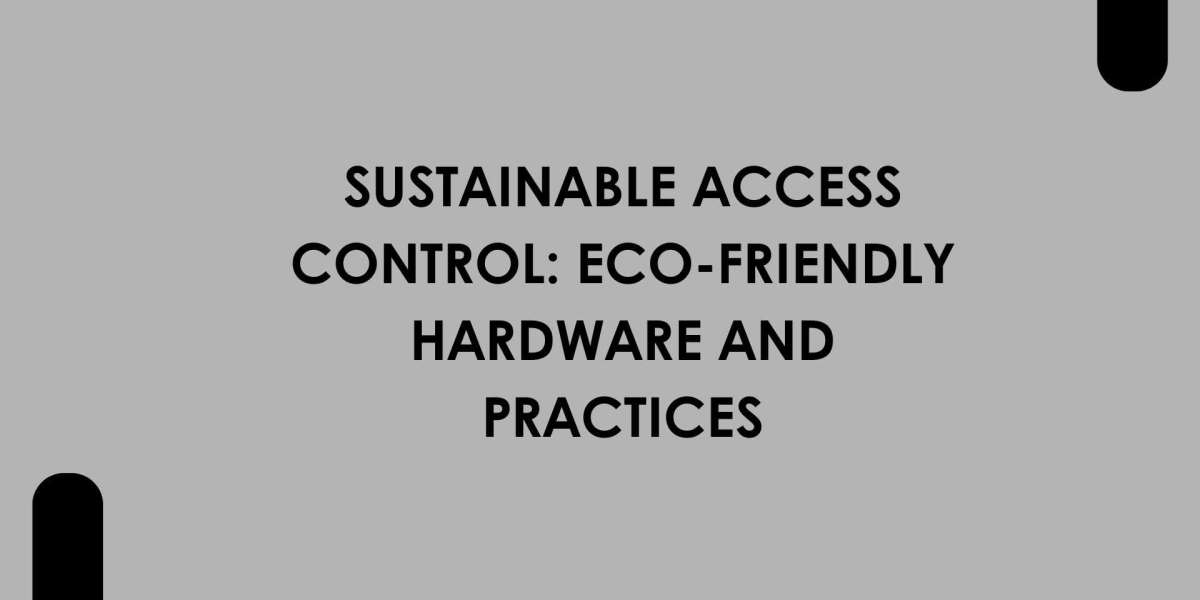In today’s environmentally conscious world, sustainability is no longer just a trend—it is a necessity. From smart homes to intelligent offices, every part of building infrastructure is being redesigned with eco-friendliness in mind. One area gaining attention is physical security, particularly the Access Control System.
At XTEN-AV, we help AV professionals and system integrators plan smarter, more efficient access control solutions. But beyond safety and automation, access control can also contribute to a greener planet. In this blog, we explore how sustainable access control works, the types of eco-friendly hardware available, and best practices for reducing environmental impact.
Why Sustainability in Access Control Matters
Access control systems operate 24/7. That means hardware components such as readers, controllers, electric strikes, and servers are constantly drawing power. Over time, this energy usage adds up—especially in large facilities or multi-site organizations.
Moreover, access systems involve physical materials like plastics, metals, cables, and batteries. If these materials are not sourced or disposed of responsibly, they can harm the environment.
As more organizations set sustainability goals and pursue green building certifications, reducing the carbon footprint of security systems becomes essential.
Eco-Friendly Access Control Hardware
Modern manufacturers have started developing access control products that are not only high-performing but also environmentally responsible. Here are some key components to consider:
1. Low-Power Readers and Controllers
Many access readers and door controllers are now designed to consume less electricity. These components enter low-power or sleep modes when idle, waking only during an access event.
Benefit: Lower energy bills and reduced carbon output over time.
2. PoE (Power over Ethernet) Devices
Using PoE simplifies cabling and reduces the need for multiple power sources. It enables centralized power management and makes systems more efficient.
Benefit: Fewer power adapters, lower installation impact, and better energy monitoring.
3. Mobile Credential Readers
Replacing physical access cards with mobile credentials reduces the need for PVC cards and plastic holders.
Benefit: Less waste and fewer raw materials used. Also reduces the manufacturing and shipping footprint of physical badges.
4. Recyclable or Biodegradable Materials
Some manufacturers now use recyclable plastics, aluminum, and other sustainable materials in their devices and enclosures.
Benefit: Less landfill waste and easier recycling at end-of-life.
5. Energy-Efficient Locks
Electromagnetic and smart locks with lower energy consumption help keep security tight without overloading the electrical grid.
Benefit: Continuous savings and reduced heat output.
Green Installation and Infrastructure
Sustainability also extends to how the system is installed and maintained. Choosing eco-friendly practices during implementation can make a big difference.
1. Minimize Cable Waste
Design efficient wiring diagrams that avoid excess cable runs. Use XTEN-AV tools to simulate layouts and optimize distances.
Result: Less copper and plastic used, and less waste during installation.
2. Use Local Materials and Suppliers
When sourcing devices, choose local or regional vendors to reduce the carbon footprint of transportation.
3. Smart Building Integration
Connect your access control system to the building management system (BMS). Use access events to trigger lights, HVAC, or elevator usage.
Example: When the last employee leaves for the day, the system can power down non-essential systems automatically.
4. Remote Configuration and Cloud Management
Cloud-based access control reduces the need for on-site servers and allows for remote system management.
Benefit: Fewer hardware components, reduced cooling requirements, and less travel for IT staff.
Sustainable Maintenance and End-of-Life Practices
Even the most efficient system eventually needs repair or replacement. Here are ways to manage that responsibly:
1. Modular Components
Choose systems with modular parts so individual pieces can be replaced without discarding the entire unit.
Benefit: Less electronic waste and lower long-term costs.
2. Battery Recycling Programs
Many wireless locks and backup systems use batteries. Partner with certified e-waste vendors to recycle these properly.
3. Regular Audits and Optimization
Review access logs and device usage to find idle or underutilized components. Deactivate or repurpose them to avoid unnecessary energy use.
4. Vendor Take-Back Programs
Work with suppliers that offer recycling or trade-in programs for old access control equipment.
Green Certifications and Compliance
Adopting sustainable access control practices can help meet the requirements of green building standards, such as:
LEED (Leadership in Energy and Environmental Design)
WELL Building Standard
BREEAM (Building Research Establishment Environmental Assessment Method)
Access control systems that contribute to energy efficiency, low emissions, and material responsibility can support earning points toward certification.
Educating Stakeholders and Users
Promoting sustainability in access control is not only about technology—it is about behavior too.
Train employees to use mobile credentials rather than requesting new plastic cards.
Educate building managers about low-power settings and green operation modes.
Encourage procurement teams to prioritize eco-friendly security solutions.
Use signage and dashboards to show occupants how their secure access also supports the environment. This transparency builds trust and participation.
Final Thoughts
The Access Control System of the future is not just secure—it is sustainable. As organizations look to reduce their environmental impact, every system in the building must contribute to the cause, including security infrastructure.
From low-energy readers to cloud-based management and recyclable materials, there are countless ways to make access control part of a green strategy.
At XTEN-AV, we provide AV designers and system integrators with the tools to build eco-conscious access control systems. Our platform supports smart layouts, optimized device placement, and efficient wiring plans to help reduce material use and energy consumption.
By designing for both security and sustainability, you are not only protecting people and property but also preserving the planet. Sustainable access control is not a compromise—it is a smarter, more responsible way to build.
Read more: https://geniusvision.world/how-to-conduct-a-security-audit-of-your-access-control-system/








